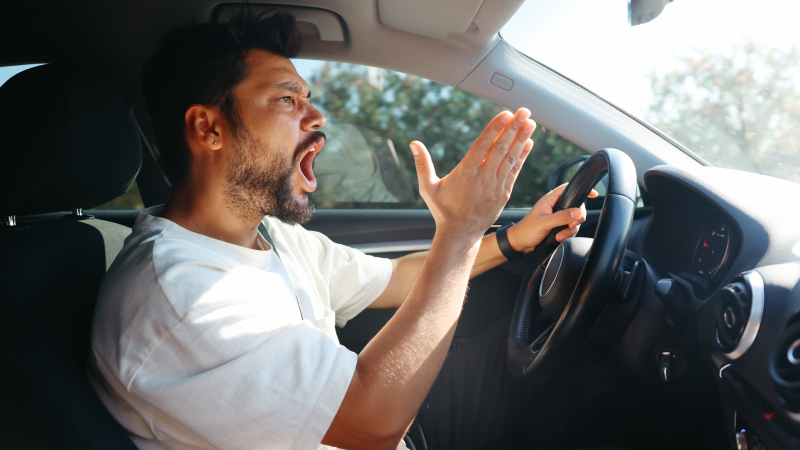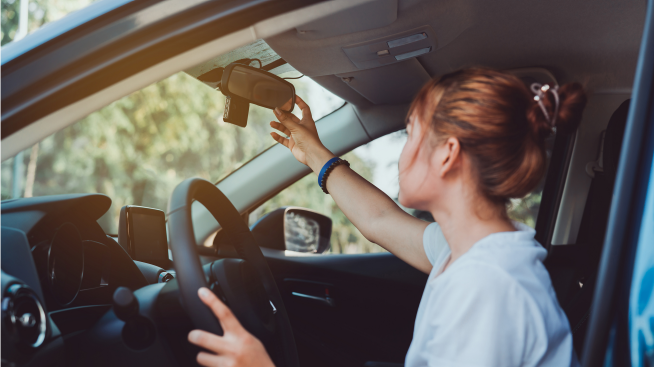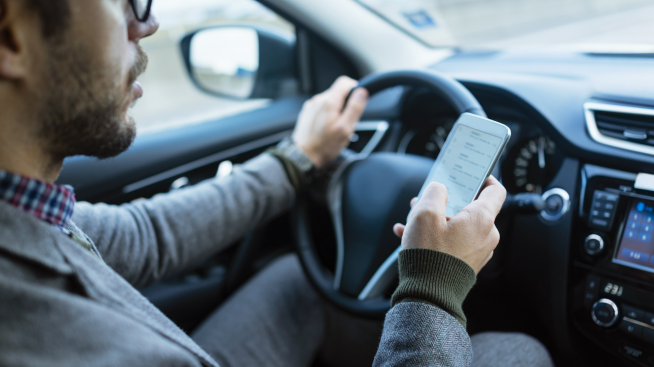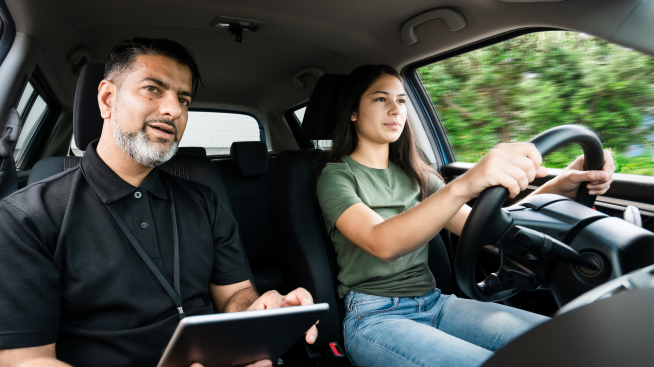Road rage: What it is and how to help prevent it

You’re on the road when another motorist begins driving erratically. Perhaps they cut you off, yell or behave in other ways that endanger you and your car. Sadly, dealing with road rage and other forms of aggressive driving is an unfortunate reality of operating a vehicle. However, by knowing the signs, keeping cool under pressure and considering different ways to react, you may help to minimize the risk of an unpleasant interaction.
What is road rage?
To understand the complex behaviors that drive road rage, it may help to consider the distinction between aggressive driving and road rage itself.
Definition of aggressive driving
Aggressive driving is when a person uses a motor vehicle in ways which endanger other drivers, pedestrians or property.
For example, an aggressive driver might speed in heavy traffic, frequently change lanes with little notice or tailgate those they can’t pass. They may break the law by running red lights, making turns without a signal or passing a stopped school bus. An unruly driver may even block, whether intentionally or not, other vehicles that are trying to merge or pass.
Road rage definition
Road rage is when aggressive driving escalates to deliberately threatening behavior toward others. This extreme form of driving may include rude gestures, profanity or other outward signs of aggression.
Sometimes road rage spills out from behind the wheel. Perhaps an enraged driver exits their vehicle and seeks to confront you. Maybe they feel it was you who was behaving carelessly on the road or endangering other people on the highway.
In other cases, road rage may involve the attempted use of a vehicle as an instrument of harm. This could be a driver trying to damage another vehicle by deliberately bumping it, sideswiping it, ramming it or even trying to run it off the road. It could be harassing other drivers by throwing objects, by using headlights to hurt visibility or by abruptly braking to endanger another, among other behaviors.
In whatever form it takes, road rage and related forms of aggressive driving have the potential to prove highly dangerous — potentially even fatal.
What causes road rage?
Understanding the definition of road rage is only half the battle. To help avoid confrontations, having a sense of what causes road rage may prove useful too.
Traffic conditions
The frequency of road rage incidents is often closely tied to the immediate environment. Typical real-time triggers include congestion, red lights, lane mergers as well as busy intersections and roundabouts. Passengers getting into or out of idling vehicles may spark annoyance, particularly if they’re seen as holding up traffic.
The time of day may also play a factor. Perhaps unsurprisingly, traffic crashes tend to spike during the busy evening commute.
Driver predispositions
Aggressive driving doesn’t always start on the road — sometimes it begins with a bad day or a rough week. If a driver has difficulty regulating their emotions, they may take out their frustrations on other drivers, which could eventually escalate into road rage.
Experts emphasize that the connection between road rage and psychological disorder is complex. People who are prone to driving aggressively may have emotional challenges in other areas of their lives. For example, aggressive drivers may be more likely to be anxious, stressed, angry or impulsive away from the wheel. The misuse of alcohol and other drugs can also be linked to incidences of road rage.
If the problem is your own unchecked aggression, it may be beneficial to consider practices like meditation or to seek professional support, such as cognitive therapies that may help develop emotional regulation skills.
How to avoid road rage
While road rage in others may be hard to control, there are measures you may consider (both before and after you get behind the wheel) to help reduce the risk of being involved in a road rage incident.
Giving yourself enough travel time
One possible way to avoid becoming impatient and potentially angry once on the road is to give yourself plenty of time to get to where you’re going.
For time-sensitive travel, using a GPS to estimate your journey’s duration may help set your expectations before you put your car into drive.
If you’re feeling agitated before you get behind the wheel, taking a few moments to catch your breath may help set the right frame of mind for your trip. It may also help you to be more understanding of other drivers you encounter.
Driving defensively
A little courtesy can go a long way, and driving defensively once you’re on the road may help you avoid confrontation. Nobody wants to endanger other people on the highway or put themselves and their passengers at unnecessary risk. Driving behaviors to consider include:
- Keeping a safe distance from other cars.
- Using turn signals properly to communicate your intentions to other drivers, giving them enough time to react appropriately.
- Giving other drivers room to merge.
- When using the horn, tapping it instead of applying it full blast.
- Avoiding the use of high beams unless necessary.
- Being considerate when parking.
Staying mindful of the rules
Periodically reminding yourself of the rules of the road may prove helpful. Aggressive driving has the potential to lead to anything from wearing down your brake pads to the risk of legal trouble.
Dealing with confrontation
Even the most courteous and rule-abiding drivers may sometimes find themselves threatened by another driver.
When faced with an instance of road rage, retaliating by giving rude gestures or otherwise actively engaging may escalate the situation. Alternative responses include:
- Avoiding eye contact or verbal engagement with angry drivers.
- Putting as much distance between yourself and the aggressor as possible.
- Remaining calm and as courteous as the situation allows from within the safety of your locked vehicle.
- Keeping your seat belt securely fastened in case of sharp or unexpected braking.
- Giving yourself enough room if parked to be able to pull away safely.
If you’re being followed by an aggressive driver or otherwise feel threatened, you may consider (if possible) navigating to a well-lit, populated area. Looking out for public facilities like hospitals and police stations may also help. It may not be best to head back home as this could give them your address.
Parking up, if safe to do so, and calling 911 to provide as much information as possible is another course of action. This information could include the date, time, and location of the incident, as well as the plate number, driver and vehicle description if you managed to capture it.
In summary
Road rage is when aggressive driving escalates into confrontational driving, and it typically spells danger. By understanding the signs of aggressive driving, you may reduce the chances of confrontation. If a confrontation does happen, keeping calm and avoiding escalation may help. What’s more, understanding some of the factors that contribute to road rage may help you better manage your own temperament on the road, and possibly extend a little extra understanding to fellow motorists who also wish to be safely on their way.



